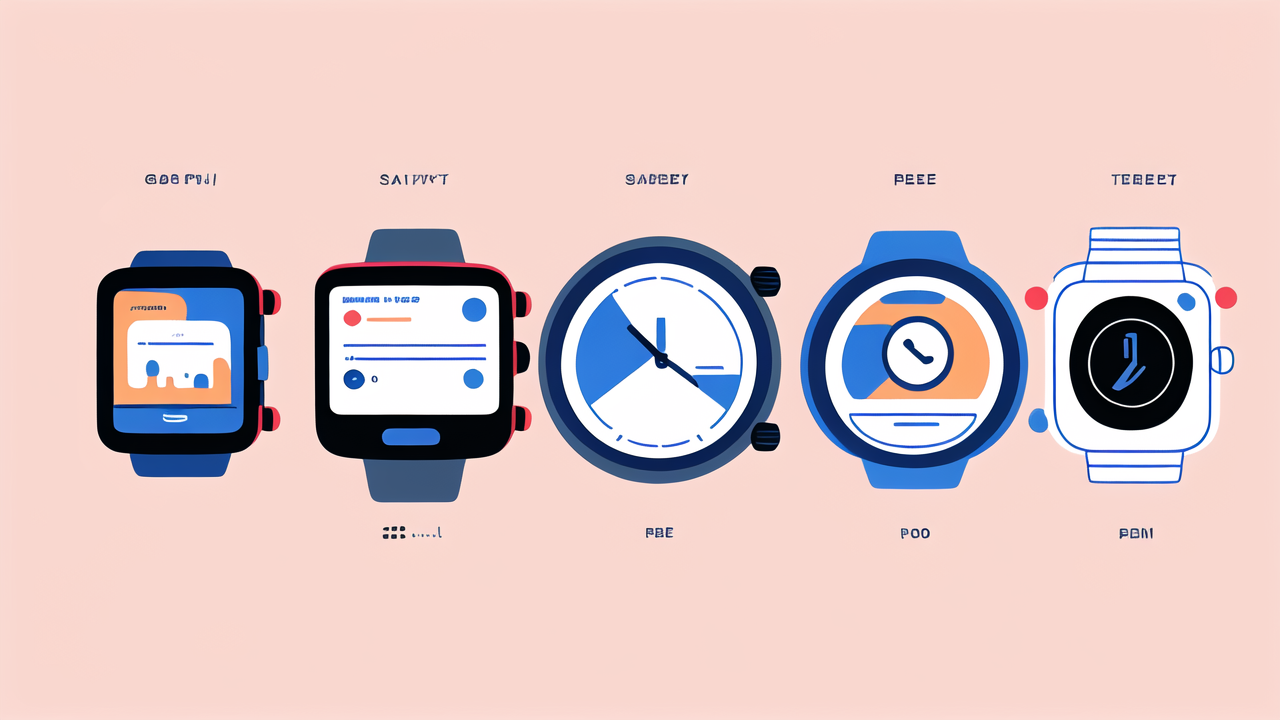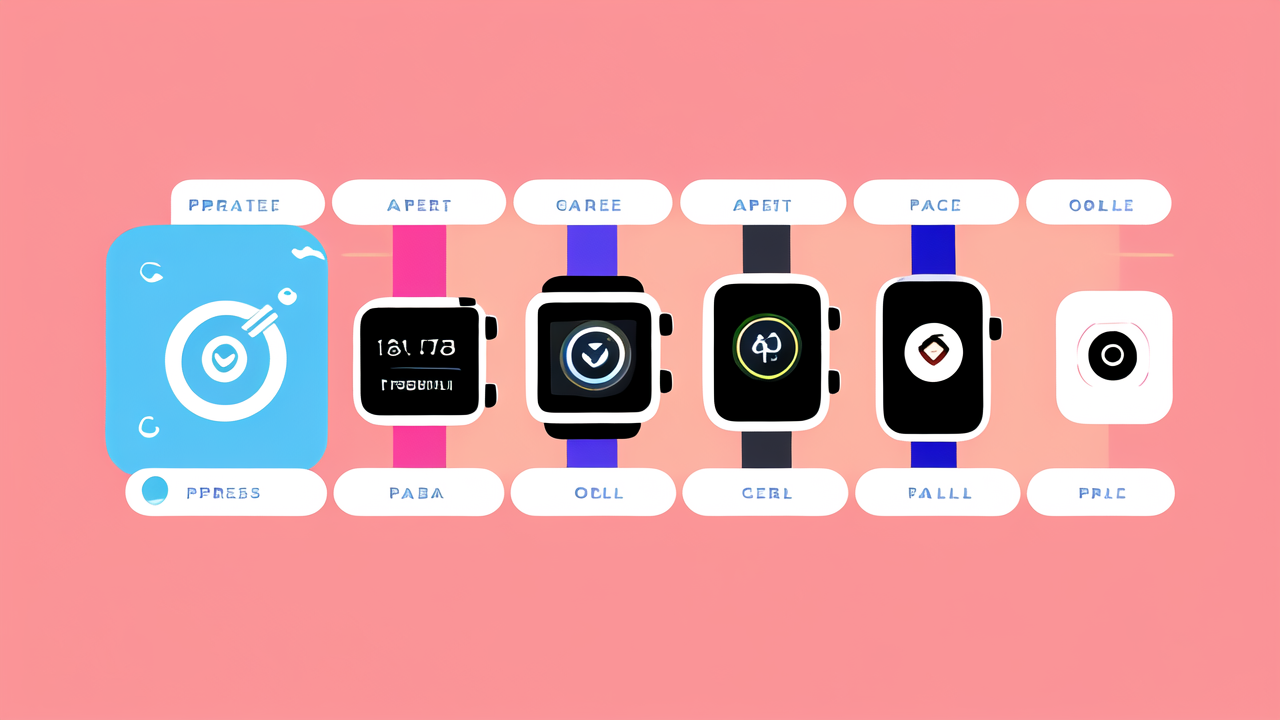Understanding the Role of Smart Watches in Modern Fitness Regimes
The Evolution of Fitness Wearables
Smart watches have come a long way since their inception. They started as simple step counters. Now, they're sophisticated health monitors. The first fitness trackers were basic pedometers. They only counted steps and estimated calories burned.

Today's smart watches are much more advanced. They can track heart rate, sleep patterns, and even blood oxygen levels. Some can even detect falls and call for help. This evolution has made them essential tools for fitness enthusiasts.
The technology behind these devices has improved dramatically. Sensors are more accurate and battery life has increased. Many now have GPS, allowing for precise tracking of outdoor activities. Some can even measure your stress levels and suggest relaxation techniques.
Key Features that Enhance Fitness Monitoring
Modern smart watches offer a range of features that boost fitness monitoring. Heart rate tracking is now standard. It helps users understand their cardiovascular health and exercise intensity. GPS tracking is crucial for runners and cyclists. It provides accurate distance and pace data.
Sleep tracking has become increasingly sophisticated. It can analyze sleep stages and offer tips for better rest. Many watches now include stress monitoring. This feature can help users manage their mental health alongside physical fitness.
Water resistance is another key feature. It allows for swim tracking and use during water sports. Some watches can count laps and identify swim strokes. Advanced models even offer oxygen saturation monitoring. This is useful for high-altitude training or detecting sleep apnea.
Integrating Smart Watch Technology into Your Training Program
Leveraging Advanced Metrics for Improved Performance
Smart watches provide a wealth of data to enhance your training. Heart rate zones help optimize workouts for different goals. You can target fat burning or improve cardiovascular fitness. Recovery time suggestions help prevent overtraining.

VO2 max estimates are now available on many devices. This metric indicates your overall fitness level. Tracking it over time can show your progress. Some watches offer personalized training plans. These adapt based on your performance and recovery.
Advanced running metrics like cadence and ground contact time are valuable. They can help improve running form and efficiency. Power output measurements are useful for cyclists. They help maintain consistent effort on varied terrain.
Many watches now offer real-time performance feedback. This can help you adjust your pace or effort during workouts. Post-workout analysis helps identify trends and areas for improvement. Some even suggest recovery activities based on your exertion level.
The Intersection of Wearables and Lifestyle Factors
Smart watches don't just track exercise. They also monitor daily activities and habits. Step counting encourages overall movement throughout the day. This helps combat sedentary lifestyles.
Sleep tracking provides insights into rest and recovery. Good sleep is crucial for fitness progress. Many watches offer tips to improve sleep quality. Some can detect snoring or irregular breathing patterns.
Stress monitoring helps users understand their mental state. High stress can impact physical performance and recovery. Guided breathing exercises can help manage stress levels. Some watches remind users to take breaks and move regularly.
Hydration tracking is another useful feature. Proper hydration is essential for fitness. Some watches can estimate sweat loss during workouts. They then suggest appropriate fluid intake. Nutrition logging helps users balance their diet with their activity level.
Choosing the Right Smart Watch for Fitness Enthusiasts in the United States
Assessing Market Leaders and Niche Wearables
The US market offers a wide range of smart watches for fitness enthusiasts. Apple Watch is a popular choice for iPhone users. It offers comprehensive health tracking and seamless iOS integration. Garmin devices are favored by serious athletes. They provide detailed metrics and long battery life.

Fitbit offers user-friendly options with strong community features. Samsung's Galaxy Watch line combines fitness tracking with smartwatch functionality. For runners, Coros watches offer specialized features and impressive battery life.
Whoop focuses on recovery and strain monitoring. It's popular among professional athletes. Polar watches are known for their accuracy in heart rate monitoring. They're a good choice for cardio-focused training.
When choosing, consider your primary activities and goals. Look at battery life, durability, and water resistance. Think about whether you need standalone GPS or music storage. Price is also a factor, as features vary widely across price points.
Compatibility with Popular Fitness Platforms
Integration with fitness apps is crucial for many users. Most smart watches work with popular platforms like Strava, MyFitnessPal, and Nike Run Club. Apple Watch users benefit from deep integration with Apple Health and Fitness+.
Garmin Connect offers comprehensive analysis tools. It syncs with many third-party apps. Fitbit has its own ecosystem with social features and challenges. Many watches can automatically upload data to these platforms.
Consider which apps you already use or plan to use. Check if the watch can sync data seamlessly. Some watches offer on-device coaching from platforms like Peloton or Nike Training Club.
Data privacy is also important. Look into how each company handles your fitness data. Some offer more control over data sharing than others. Remember, the best smart watch is one that fits your lifestyle and helps you reach your fitness goals.




Leave a comment
This site is protected by hCaptcha and the hCaptcha Privacy Policy and Terms of Service apply.